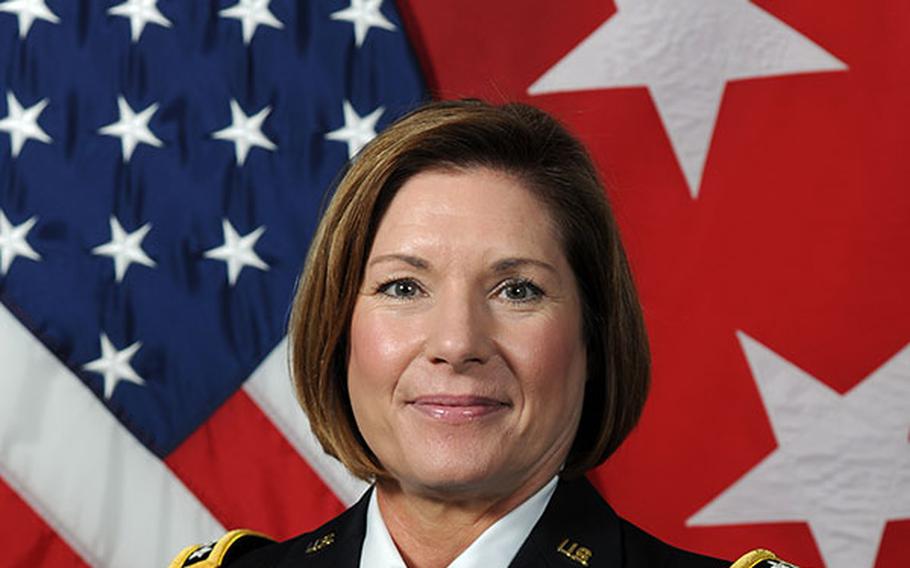
Army Lt. Gen. Laura Richardson was confirmed by the Senate in a unanimous voice vote on Wednesday, Aug. 11, 2021, to become the next commander of U.S. Southern Command, which will make her just the second woman in history to lead a combatant command. (U.S. Army North)
Army Lt. Gen. Laura Richardson was confirmed by the Senate in a unanimous voice vote on Wednesday to become the next commander of U.S. Southern Command, which will make her just the second woman in history to lead a combatant command.
Richardson, who now leads U.S. Army North, will receive a fourth star before taking command of SOUTHCOM, which oversees U.S. military operations across South and Central America and the Caribbean. She will become just the second female four-star general in the Army’s history.
Richardson will replace SOUTHCOM’s outgoing chief, Navy Adm. Craig Faller, who has led the combatant command headquartered just outside Miami since November 2018. The Defense Department has yet to set a date for the change of command, a SOUTHCOM spokesman said Thursday.
SOUTHCOM leaders have traditionally faced challenges in the region such as drug trafficking, narcoterrorism, providing humanitarian and disaster relief, and overseeing the controversial detention facility at Guantanamo Bay, Cuba. Richardson will also inherit responsibility for operations in a portion of the globe that has been devastated by the ongoing coronavirus pandemic. She will also have to work to ensure the United States retains its long-held influence throughout the vast majority of the region, where Russia and China in recent years have increased efforts to work with and influence nations in the Western Hemisphere.
Richardson told senators last week during her confirmation hearing on Capitol Hill that her priorities included expanding training exercises and other security cooperation operations with partner nations in the region and increasing opportunities for partner nations in the region to send their troops to U.S. military training and education programs.
“We must hasten to pick up the pieces left by the pandemic and transform our relationships to meet 21st century security challenges. Put simply, winning together with our allies and partners matters,” Richardson told senators. "Whether [it is working] against [the coronavirus], transnational criminal organizations, the predatory actions of China, the malign influence of Russia, or natural disasters, there's nothing we cannot overcome or achieve through an integrated response with our interagency allies and partners.”
Richardson commissioned into the Army as an aviation officer in 1986 and flew UH-60 Black Hawks, according to her official biography. She commanded a 101st Airborne Division aviation battalion in Iraq and has also served in Afghanistan.
She took command of U.S. Army North at Joint Base San Antonio in July 2019 after serving as the deputy commander of U.S. Army Forces Command at Fort Bragg, N.C.
Richardson could soon be followed by the third female to lead a combatant command. President Joe Biden nominated Air Force Gen. Jacqueline Van Ovost to lead U.S. Transportation Command. The Senate has yet to formally consider her nomination.
Air Force Gen. Lori Robinson was the first woman to lead a combatant command. She led U.S Northern Command from 2016 until her retirement in 2018.
Biden nominated Richardson and Van Ovost for those top jobs in April, after they were recommended by top Pentagon leaders during President Donald Trump’s administration. The New York Times reported in February that former Defense Secretary Mark Esper and Gen. Mark Milley, the chairman of the Joint Chiefs of Staff, slow rolled their recommendations of the two women for those jobs until after the November 2020 election, fearing the White House might nix their selections because of their genders.
Esper, who was fired shortly after Trump’s election loss, told The Times that he and Milley agreed Richardson and Van Ovost were the best, most qualified choices for the positions. He confirmed their recommendations were delayed until after Biden had been elected.
"They were chosen because they were the best officers for the jobs, and I didn't want their promotions derailed because someone in the Trump White House saw that I recommended them or thought [the Defense Department] was playing politics," Esper told The New York Times in February. "This was not the case. They were the best qualified. We were doing the right thing."